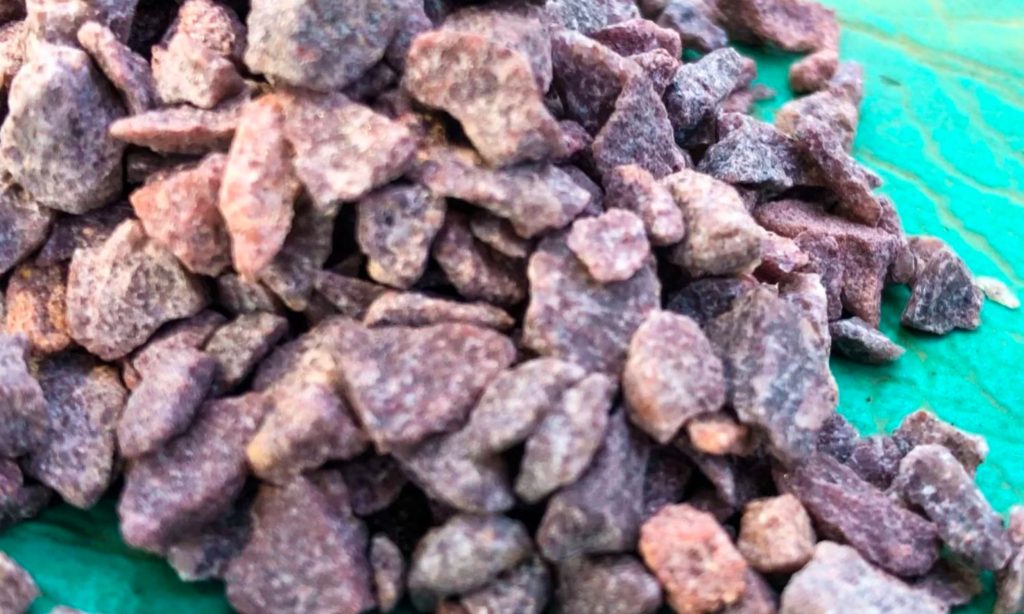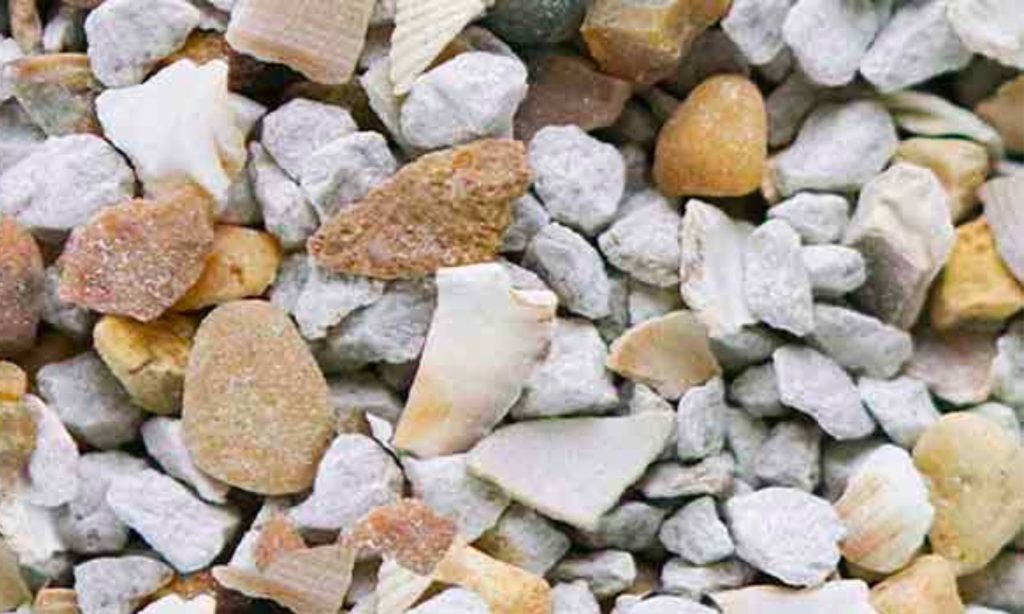What Is Chicken Grit? and When to Feed Chickens Grit
Have you ever wondered what chicken grit is? If so, you’re not alone. Many people who raise chickens have never heard of it and don’t know when to feed it to their flock. Chicken grit is simply crushed limestone or ground-up oyster shells that provides chickens with a source of calcium. It’s an important part of a chicken’s diet and plays a vital role in keeping them healthy. So, if you’re wondering what chicken grit is and when to feed it to your flock, read on!
Disclosure: Some of the links below are affiliate links, meaning, at no additional cost to you, I will earn a commission if you click through and make a purchase.
What is chicken grit?
Chicken grit is a form of crushed limestone or oyster shells that contain essential minerals such as calcium and phosphorus. These minerals are important for chickens’ health and development, especially in young chicks.
The grit helps chickens of all ages to grind up their food more effectively because it has small particles which help them break down the food inside the bird’s gizzard.
Why do chickens need it?
Grit helps chickens to grind and process their food, because they lack the teeth that other animals have. It is a special type of grit made from crushed rocks, shells or granulated clay.
Without grit, chickens can’t be as healthy and cannot metabolise their food correctly. Therefore, it’s important to give them periodic feedings in order to keep up with their nutritional needs.
In addition, having enough calcium in their diet is also essential for healthy egg production which makes chicken grit an especially valuable ingredient!
When to feed chickens grit?
It’s recommended that you start feeding your flock chicken grit when they are around 6 weeks old. You can continue offering it until they reach adulthood or stop eating it altogether.
It’s particularly important to offer it during the winter months when there isn’t much natural gravel available to them.
Additionally, if you’re feeding your flock layer feed (which doesn’t contain enough grit on its own), you should also offer them grit to make sure they’re getting enough minerals for proper digestion.

Thinking Chickens?
Get our FREE Raising Baby Chicks Checklist!
[convertkit form=4855906]
How to Feed your Chickens grit?
Feeding your chickens extra grit can play an important role in the health and wellness of your feathered friends, making them happier when they have all the nutrients their bodies need.
To ensure that your chickens are receiving enough grit for optimal digestion and nutrition, you should give them a special feeder full of commercial poultry grit, crushed eggshell, crushed oyster shells or small rocks every other day.
How much should they eat each time?
Ideally you should feed your chickens a small amount of grit daily, but no more than 10% of the entire meal. The size of the grit also matters – it should be small enough so that the chickens can easily swallow it but large enough so they can still pick it up with their beaks.
For chicks under 12 weeks of age, pea-sized gravel works best; after that, commercial chicken grit works well.
As long as you are keeping an eye on how much grit your chickens are eating and ensuring it is suitable in size and composition you will be providing them with all the nutrients they need to stay healthy and strong!

Different Types of Grit
Chicken grit is an invaluable resource for any poultry-keeper; it consists of crushed shells and other coarse materials which help to keep a chicken’s digestive system running smoothly. There are several different types of chicken grit, each with its own purpose.
Oyster shell grit is rich in calcium and often used as part of a balanced diet for egg-laying hens, while game bird starter-mash contains small insects and protein to support the growth and development of young birds.
Mixed flock grit, on the other hand, provides a nutritionally balanced mix which can be given to chickens of all ages and breeds.
Additionally, there is also probiotic grit, which helps to improve the levels of good bacteria present in the gut, promoting overall health.
Whatever their purpose may be, it’s clear that different types of chicken grit serve an important role in caring for poultry.

The best Chicken Grit Feeders
Finding the best chicken grit feeder for your birds can be daunting, but it pays to pay attention to a few details. When searching for the best chicken grit feeders, consider the size and capacity of the feeder so that you can accommodate larger flocks and avoid constant filling.
You are also going to want a separate container or a separate feeder from your normal chicken feed. Look for models with adjustable grates inside the hopper that limit how much grit your chickens take out at one time to reduce waste but also giving them free access.
It’s also important to make sure it is accessible from both sides, so hens don’t have to wait in line for their turn at mealtime or get pushed away from their food by other more dominant birds.
Last but not least, ensure your chicken grit feeder is built tough enough to stand up against weather elements and curious wildlife that may try to make a snack out of it.
If you are looking for a grit feeder check out the Supa Feed/Grit Station and the Small Animal Feeder with Lid.
Where to buy Grit
If you’re new to raising backyard chickens, chicken grit might be an item you need to get your hands on. Fortunately, it’s available in most stores that sell commercial poultry feeds, from the feed store to big box retailers like Wal-Mart and even Amazon.
And if that doesn’t work, there are plenty of online resources that allow you to buy chicken grit at reasonable prices.
So if you’re looking for the best place to buy some chicken grit, don’t worry – chances are there’s something out there for you – just do a bit of shopping around!
We buy a 50 pound bag of contractors sand at home depot and put it in a container in their run. It costs less than $5 and has all different sized pebbles and sand in it. If I use a large container, sometimes they dust bathe in it! Many people do not buy any type of grit for their flocks and they do just fine.

Does chicken grit really make that big of a difference in the health of your chickens?
There is a great deal of debate on the necessity of including chicken grit in the diet for one’s chickens. It truly depends on the type of chickens one owns, their daily habits and environment, and even what other commercial feed options are available to them.
Chickens need grit primarily to help them digest their food, but it posed as an extra expense to many chicken owners.
Ultimately, providing your chickens with grit may be beneficial as it helps with digestion and optimal health or it could be overlooked depending on budgeting concerns which every owner must ultimately decide for themselves.
What happens if a chicken doesn’t get grit?
Sour crop can be caused by insufficient grit in the gizzard. When a chicken eats, the food goes down into the crop for storage and later digestion.
If the food cannot be processed due to lack of grit, the food will start to rot and your hen will develop a sour crop.
Holding the grit in the gizzard is essential to the bird in order to process and derive nutrition from the food.
If a hen eats nothing but feed, it is said that they can live without grit, but our backyard girls enjoy free-ranging and ingesting all sorts of seeds, greens and bugs so grit is necessary for these ladies.

To conclude, chicken grit is an essential component for any flock as it helps chickens digest their food correctly by breaking down hard material such as shellfish and grains.
Chickens should be provided with grit starting at around four weeks old and it can be given to them a few times a week in small portions. Commercial chicken grit can be expensive, but there are some great inexpensive sources of this like sand, clay, small stones and oyster shells that can do the job perfectly well.
It is important to understand the importance of providing chickens with grit as they can suffer from serious health risks when they don’t get enough they need.
The benefits of providing your chickens with quality grit far outweigh any potential cost-savings associated with going without. Investing in quality chicken grit may very well save you money in the long run by avoiding preventable medical expenses for poultry care.
You may also enjoy these related articles:
- Top 10 Chicken Breeds for Beginners
- Tips for Raising Healthy, Happy Baby Chicks
- When Will My Chicken Start Laying Eggs
Did you enjoy this article? Want to hear more? Stay in touch! Sign up below to receive weekly tips and inspiration for your homestead.
[convertkit form=3733554]
